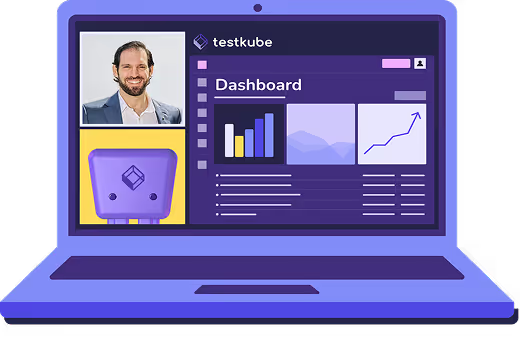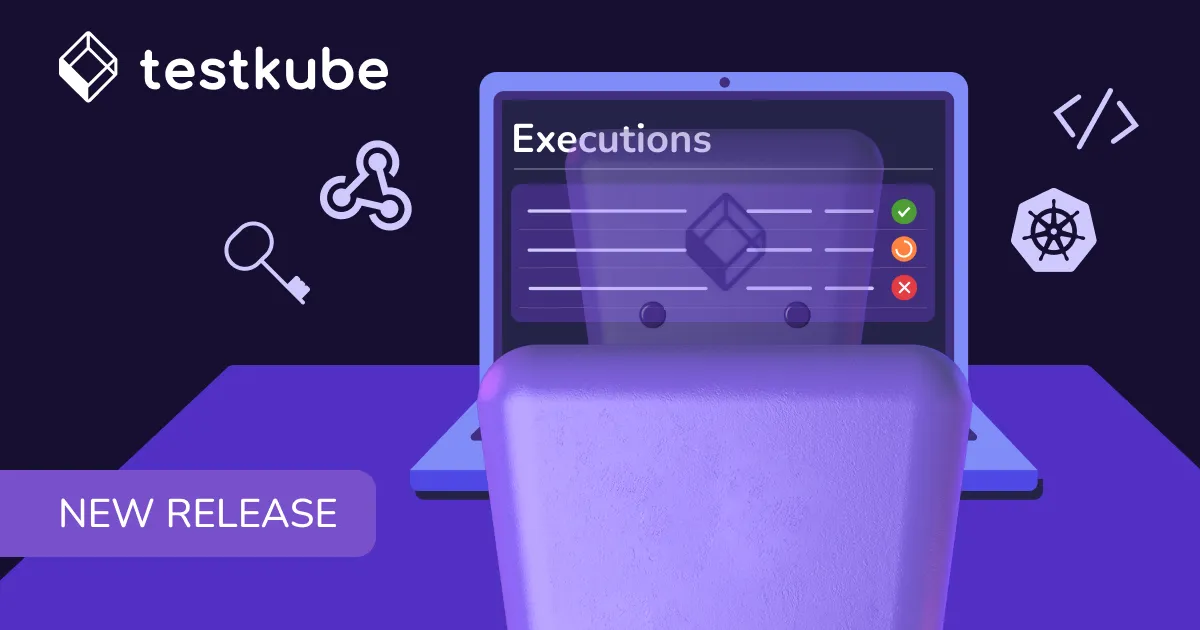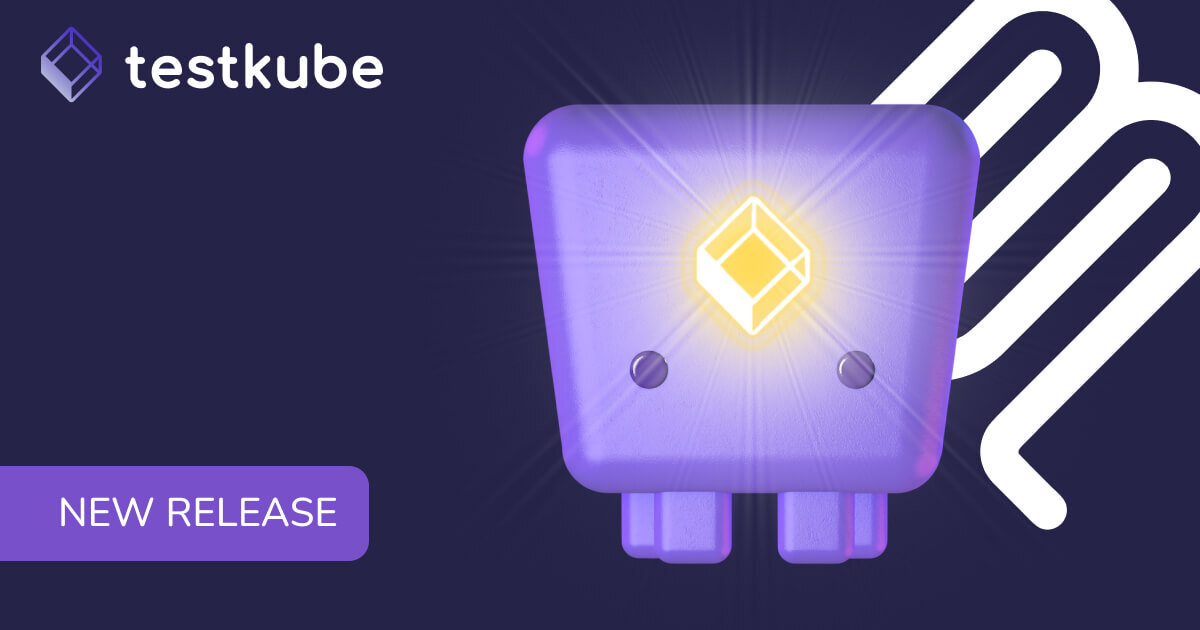

Table of Contents
Try Testkube instantly in our sandbox. No setup needed.
Try Testkube instantly in our sandbox. No setup needed.




Table of Contents
Executive Summary
Load testing is crucial to understanding how an application performs under stress and ensuring it can handle high-traffic loads. Traditional load testing methods fall short regarding scalability and simulating a production-like setup.
This is where distributed testing comes in. It involves mimicking simultaneous users by spreading tests across multiple machines and creating a more realistic setup. This helps to make your application resilient by identifying points of failure.
Running distributed load tests also has its own limitations:
- Resource limitation: Load testing is constrained by the hardware limitations of the testing infrastructure, making it difficult to simulate concurrent users.
- Static Test Configuration: The lack of flexibility with test scripts makes adapting to different production-like environments difficult.
- Result aggregation: When running distributed load tests, combining results from multiple machines can be complex and error-prone.
These challenges, limited scalability, and distributed parametrization make the process more complex. That’s where tools like k6 streamline the load-testing process. With the k6 operator, distributed load testing with Kubernetes is easier and more efficient.
In this blog post, we’ll examine k6 and the k6 operator and analyze k6 vs Testkube for distributed load testing.

k6 & k6 Operator
k6 is an open-source load testing tool by Grafana. It offers developer-friendly APIs, scripting support using JavaScript, and various other configurations that allow users to perform automation-friendly load testing.
What sets k6 apart from other load-testing tools is its ability to efficiently generate massive loads from a single machine using all CPU cores. Their documentation suggests that if you need less than 300,000 requests per second, you should be good with running k6 on a single machine.
However, there are scenarios where you want to emulate multiple machines running a single test. You want to test your application’s load by generating traffic from different IP addresses, or your single instance cannot create the needed load. If you’re using Kubernetes in your organization, you can use the k6 operator to run distributed load tests.
The k6 Operator is designed to run on a Kubernetes cluster. It leverages Kubernetes' orchestration capabilities to scale and manage load tests. It further automates the deployment, execution, and scaling of k6 tests, reducing manual intervention. However, it is difficult to use in certain scenarios, let us look at some of the challenges.
- Requires Kubernetes Expertise: k6 is primarily designed for DevOps teams. Thus, a good understanding of Kubernetes is needed. This is a challenge for teams that lack Kubernetes expertise, which makes it difficult to manage tests.
- Direct Cluster Access Needed: You need direct access to the cluster to use the k6 operator, which can pose security risks and operational challenges.
- Triggered by Custom Resources: Your load tests in k6 can only be triggered using custom resources within the clusters. This further complicates the testing process, requiring additional Kubernetes-specific knowledge to define and manage tests.
- No Git Support: Out of the box, there’s no support for Git, meaning you cannot manage your k6 tests within Git repositories.
- No UI: The absence of a UI makes it harder to visualize and manage tests. It also hinders the troubleshooting process, as users must learn CLI commands and review logs and configuration files, which can be tedious and error-prone.
By addressing many of these challenges, Testkube makes distributed load testing using K6 much easier, more accessible, and more efficient.
Distributed Testing Using Testkube
Testkube is a Kubernetes-native testing framework that automates and manages end-to-end test execution within your Kubernetes clusters. It allows you to bring in your testing tool, including k6, enabling you to perform efficient testing seamlessly. Using Testkube, you can orchestrate complex test scenarios using Test Workflows and manage test configurations and resource utilization, all from an intuitive UI. Read more about Testkube.
Benefits of Using Testkube For Distributed Load Testing
Testkube enhances distributed load testing by integrating seamlessly with Kubernetes. It offers several benefits:
- Kubernetes Job Scheduler: Testkube leverages the Kubernetes job scheduler to manage parallel test executions. This ensures efficient resource allocation and, thus, optimal test performance. It also helps simulate a high number of concurrent users and makes it scalable.
- Test Workflow: Test Workflows allow you to define complex test workflows that enable load generation and parallel test executions. You can configure diverse user behavior and conditions to stress-test your application.
- In-Cluster Testing: Unlike other testing frameworks and tools, Testkube executes your tests within the Kubernetes clusters, ensuring a secure and production-like environment and thus improving the reliability of your test outcomes.
- Leverage your own infrastructure: You can run Testkube on your existing infrastructure, thus eliminating the need for external testing environments. This helps maintain consistency across test and production environments and decreases infrastructure costs.
k6 Operator vs Testkube
Let's examine the K6 operator and Testkube closer to understand their differences and why Testkube is a better option for running distributed K6 tests at scale.
- Tests can be triggered in multiple ways: Unlike the k6 operator, which relies solely on custom resources to initiate tests, Testkube allows tests to be triggered manually or through API calls, CLI commands, Cronjobs, and CI/CD pipelines, providing more flexibility.
- Git Integration: Testkube integrates with Git, enabling version control and collaborative management of test scripts.
- Parametrization: Testkube allows you to adjust test parameters across multiple nodes dynamically. This flexibility enables more comprehensive testing for different scenarios.
- Provisioning dependent services: Testkube allows you to provision dependent services required for your tests within the Kubernetes cluster. This ensures that all the necessary components are available and correctly configured.
- Combine with other tests: You can combine your distributed load tests with functional and integration tests within the same workflow. This holistic approach provides a more thorough testing of your application.
- Intuitive UI: Testkube provides an intuitive UI that everyone on the team can use. It allows teams to define, execute, and manage tests, view logs, and test artifacts in a single pane.
Here’s a comprehensive list of differences between k6 and Testkube
By providing advanced features and leveraging Kubernetes’ capabilities, Testkube offers a more versatile and comprehensive approach to distributed load testing than the k6 operator.
Summary
In this blog post, we examined the K6 Operator and Testkube for running distributed K6 tests in Kubernetes environments. Leveraging k6 and Testkube can significantly enhance distributed load testing. While the k6 Operator offers robust automation, it requires deep Kubernetes expertise. Testkube simplifies the process with flexible test triggering, Git integration, distributed parameterization, and support for provisioning dependent services.
Get started with Testkube today or follow our step-by-step tutorial for scaling your load testing with k6 and Testkube. Please visit our documentation for detailed guidance on using Testkube for distributed testing with k6 and more information on the features. Should you have any questions or need assistance, do not hesitate to contact us in Slack.


About Testkube
Testkube is a cloud-native continuous testing platform for Kubernetes. It runs tests directly in your clusters, works with any CI/CD system, and supports every testing tool your team uses. By removing CI/CD bottlenecks, Testkube helps teams ship faster with confidence.
Explore the sandbox to see Testkube in action.






